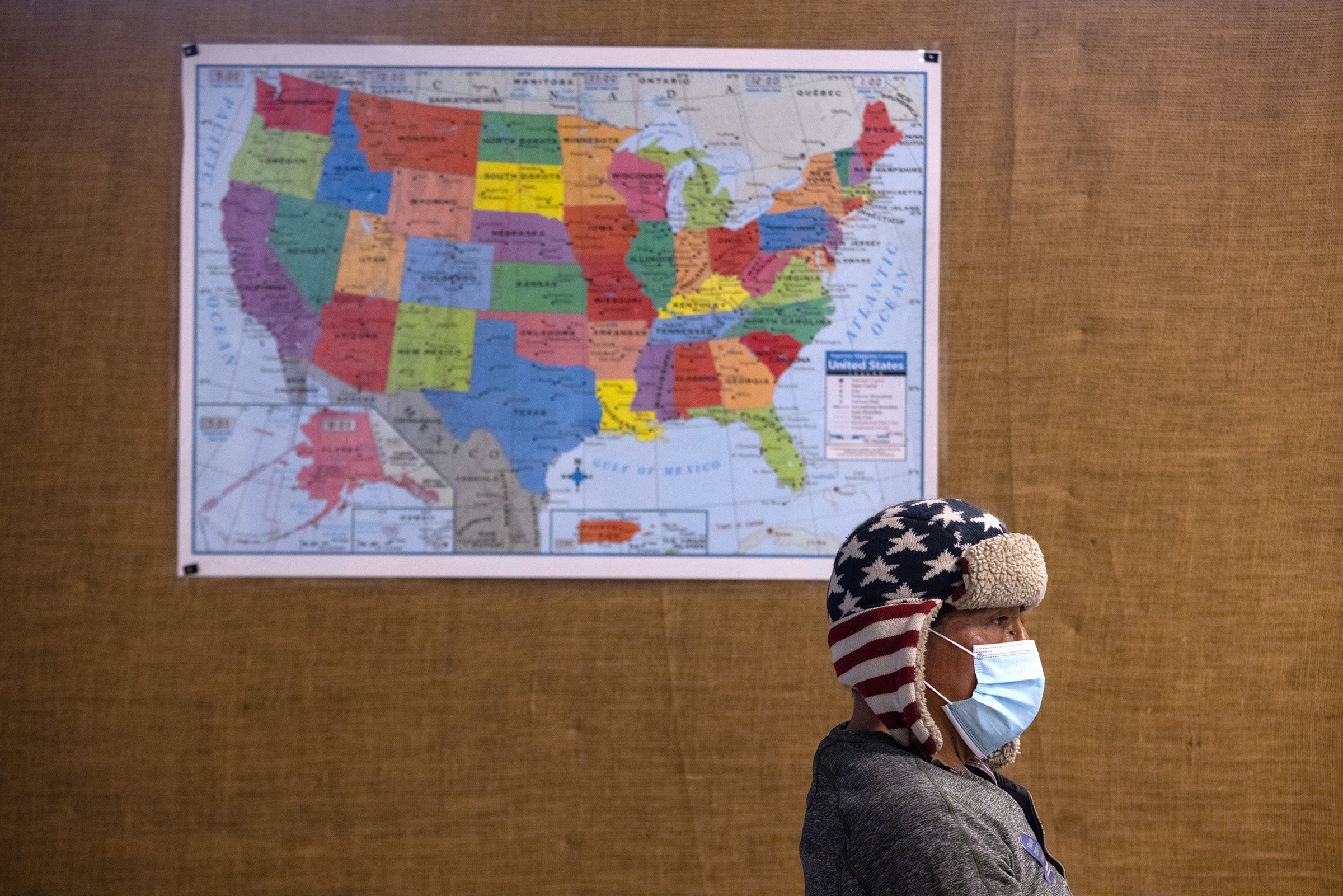
.
Stories of such inordinate obstacles are fairly common and might help explain why Hispanic and Black individuals in lots of states are getting vaccinated at disproportionately lower rates than white or Asian people– despite having a higher concern of COVID-related death and illness. The Kaiser Household Structure collects information onCOVID cases, deaths and vaccination rates amongst people who recognize as Black, white, Asian or Hispanic. Scientific American visualized these data for five populous states with some of the worst COVID outbreaks: California, Texas, Florida, New York City and Illinois. The graphic listed below programs that Hispanic individuals had some of the most affordable vaccination rates proportional to their share of the population, especially in California and Texas. Black people in New York, Illinois and Florida are getting vaccinated at significantly lower levels.
Many factors may be behind these inconsistencies [see additional graphics]: Age minimums for COVID vaccination could favor white Americans, who have a longer life expectancy than Black Americans. Poor Internet access might make protecting vaccine consultations a difficulty. And not owning a vehicle or living near public transit makes it harder to get to vaccination sites. For some immigrants, language barriers and onerous proof-of-eligibility requirements add more problems.
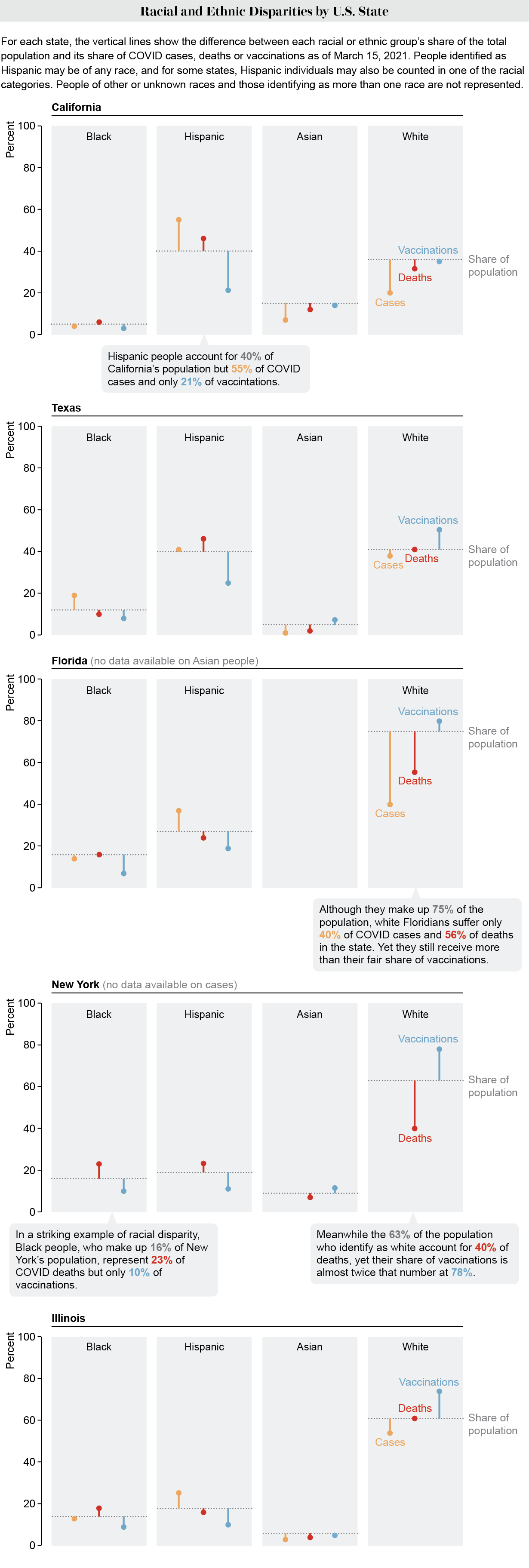
Among the primary qualifications for a COVID vaccine in many states is being older (generally age 60 or above), which is understood to be amongst the biggest danger elements for extreme illness and death from the unique coronavirus. Since of Black Americans’ much shorter life expectancy, less of them may be eligible for a vaccine– despite being at a greater risk of death than similar-aged or older white people.
Twin doctors Oni and Uché Blackstock blogged about this disparity in a recent Washington Post op-ed requiring lower age limitations for Black individuals to get immunized. “These age cutoffs disregard the impact of systemic racism on shortening Black Americans’ lives,” Uché Blackstock, founder and CEO of the company Advancing Health Equity, informed Scientific American “Neglecting the reality that we’ve had Black Americans of more youthful ages pass away at higher rates than white Americans– even 10 years older than them– I think enhances these inequities.”
Remarkably, Hispanic individuals in the U.S. have a higher general life span than non-Hispanic white individuals, regardless of normally having a lower socioeconomic status. This has actually been called the “Hispanic paradox,” or “Latino paradox.” Possible explanations include the “healthy immigrant impact”– the truth that current immigrants tend to be healthier than the locally born population– in addition to behavioral elements such as diet plan and way of life. Latinx individuals have also had the greatest drop in life expectancy due to the fact that of COVID, so it does not make sense to raise the age cutoff for vaccination in that group.
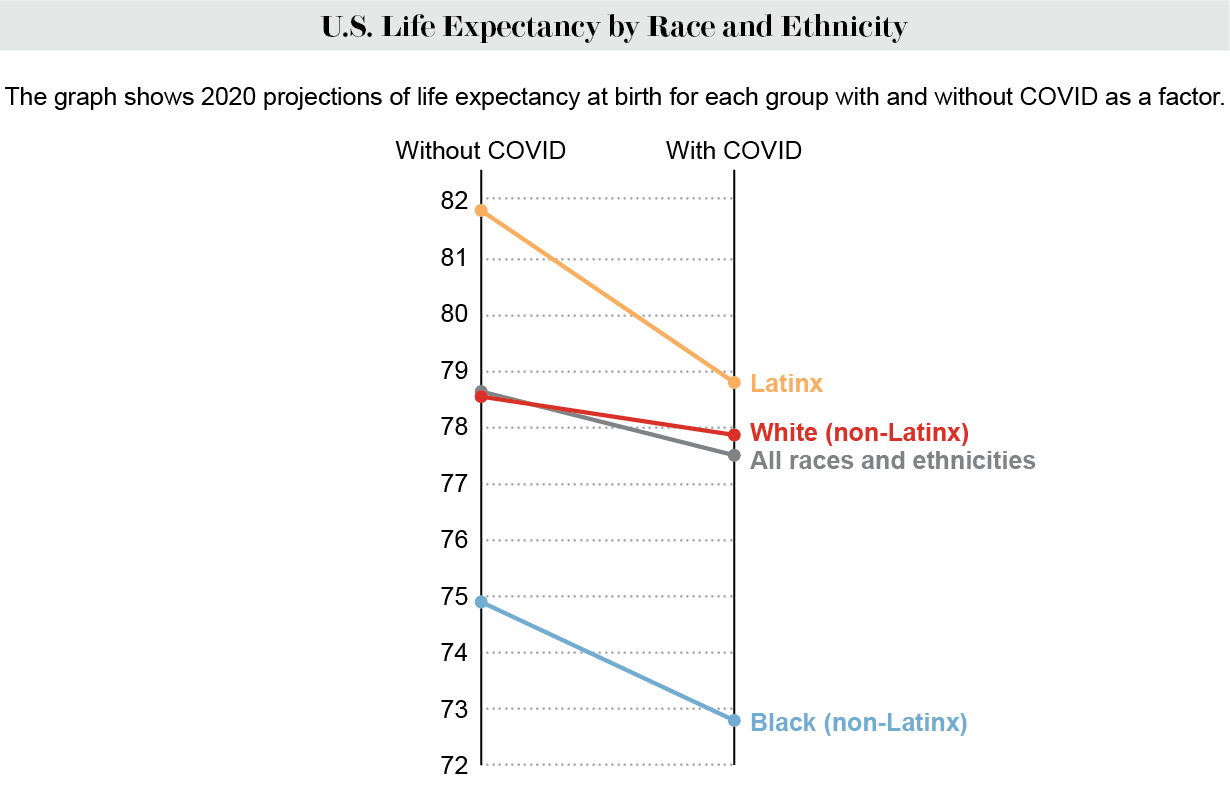
” Right now the most important barrier is genuinely the restriction around age only and not enabling for race to be carved out as its own category,” states Nneka Sederstrom, primary health equity officer at Hennepin Healthcare in Minnesota.
The issue stems from “a deep-rooted failure to name race as its own aspect” in disease threat, Sederstrom says. She adds that every attorney she has actually consulted contends that singling out race as a requirement for eligibility breaches the 14 th Change, which extended citizenship and equivalent rights to Black Americans and anybody born or naturalized in the U.S. “If you’re saying that the modification that provides us the opportunity to supposedly deal with equity and equality is the thing that’s in the way of really attending to equity and equality,” Sederstrom says, “then we need to change that.”
Some regions have already been able to utilize lower age cutoffs for vaccinating Native Americans, who have actually likewise ended up being sickened and died at higher rates throughout the pandemic.
Another barrier to getting vaccinated is difficulty in registering for appointments online. Applicants typically have to browse labyrinthine portal systems and complete several pages of documentation prior to visits fill up, so it becomes a race for who can fill and finish the forms the fastest. A 2015 survey found that a smaller portion of Black and Latinx families have computer system and broadband access than white and Asian homes. And many individuals of color work in hourly tasks that do not give them time off to invest long stretches of time trying to find vaccine consultations.
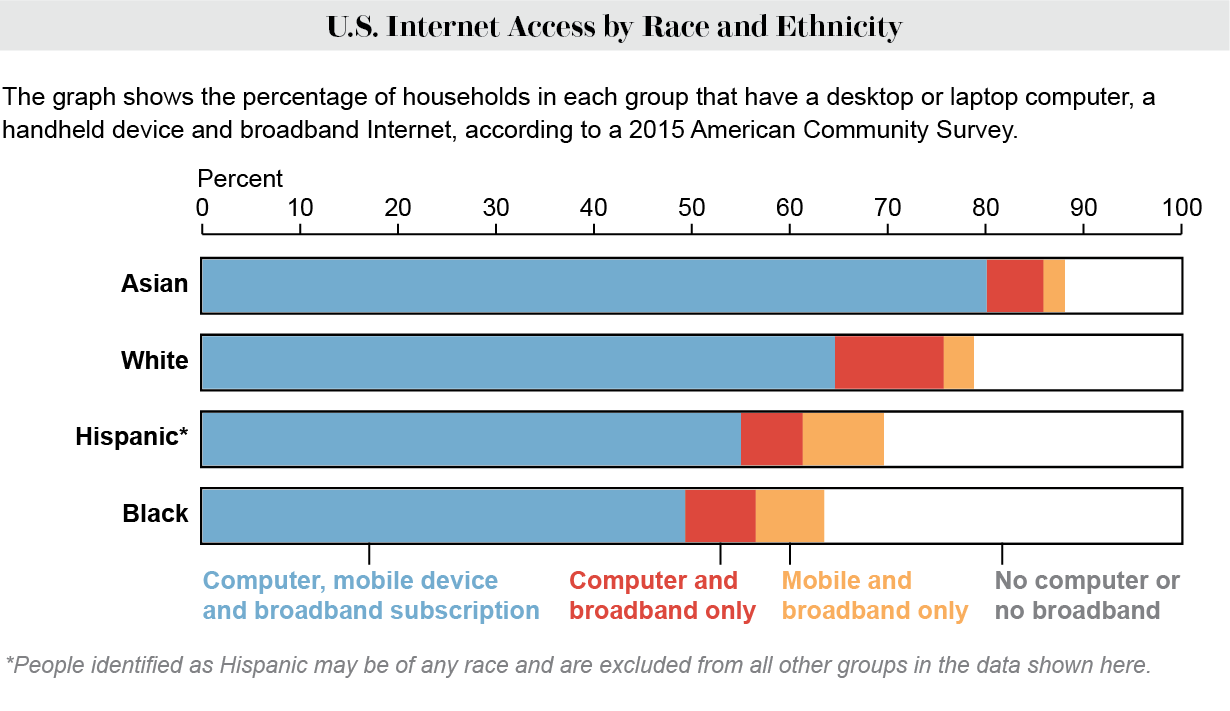
In Maryland, the Vaccine Hunters have been assisting senior citizens and people of color register for visits. “It ended up being a video game of ‘How fast can you type?'” states Maria Peterson, a member of the group. “It’s like The Cravings Games“
One issue for Hispanic people has actually been Web sites with poor Spanish translations– often resulting from a typical automatic tool. “The grammatical mistakes we discovered would have made it difficult for a Spanish speaker to figure out what was being asked,” states Peterson, a native Spanish speaker who teaches the language at the high school level.
Getting to vaccination websites can also be a difficulty. An analysis of study data discovered that in 2017 Black families were the least most likely of any racial or ethnic group in the U.S. to own a car, followed by Native American households.
In Chicago’s South Side, which is predominantly Black, one need to make a 30- minute drive or take a roughly hour-long bus flight to get to the mass vaccination site at the United Center in the city’s downtown location, says Armani Nightengale, a contact tracer at the Calumet Location Industrial Commission who is also assisting people make vaccination consultations. “We had a circumstances of appointments opening up the day of, and we asked individuals if they wanted to can be found in today,” Nightengale says. “One girl resembled, ‘Are you kidding me? How am I going to get there?'” Lots of people have work or are looking after kids and can not just drop everything to get vaccinated. Taking public transit poses a possible COVID exposure danger, and ride-sharing is pricey, she adds.
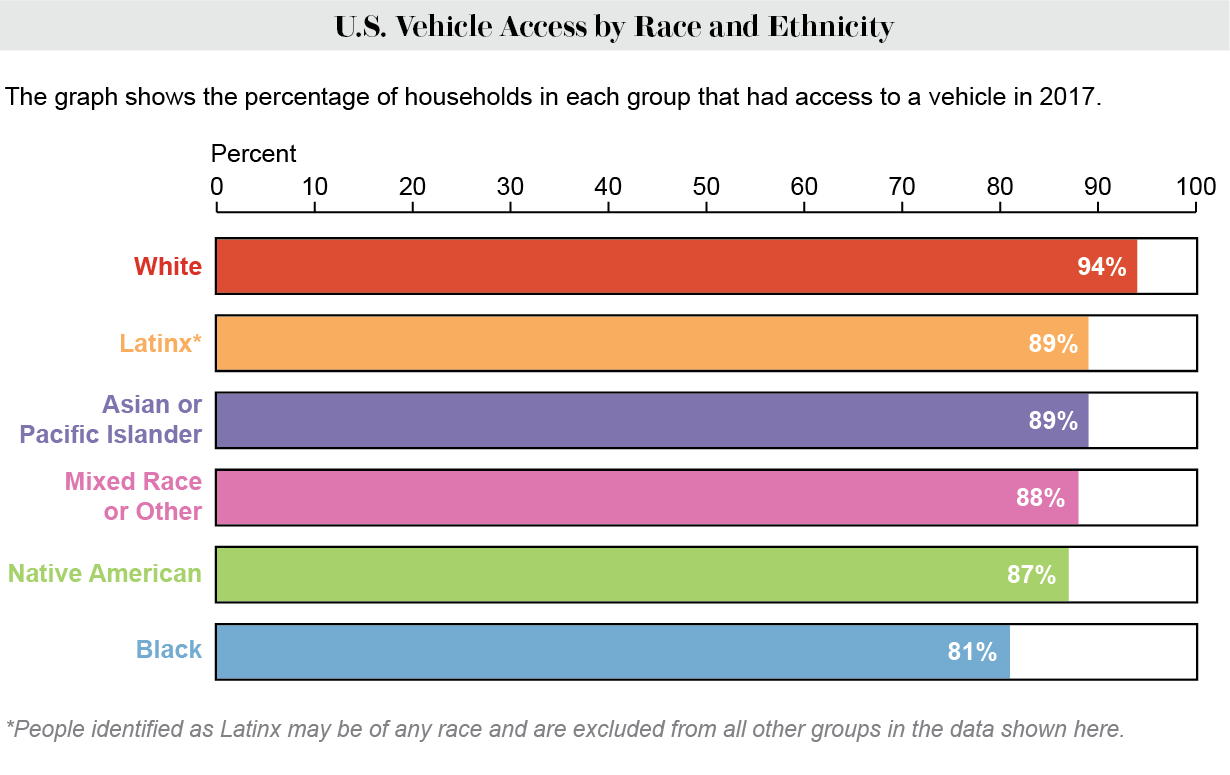
In addition to these barriers, there is the concern of vaccine hesitancy. Black Americans are still more likely than white Americans to withstand getting a vaccine, although this space has decreased in time
Uché Blackstock thinks many of the concerns individuals have about vaccination are addressable. “A lot of people of color who have issues about the vaccine are not a determined ‘no,'” she says. “A substantial percentage are ‘wait and see.'”
” Hesitancy does not indicate refusal,” Sederstrom notes.
Editor’s Note: The term Hispanic refers to people of any race whose heritage is in Spanish-speaking countries.


No comments:
Post a Comment